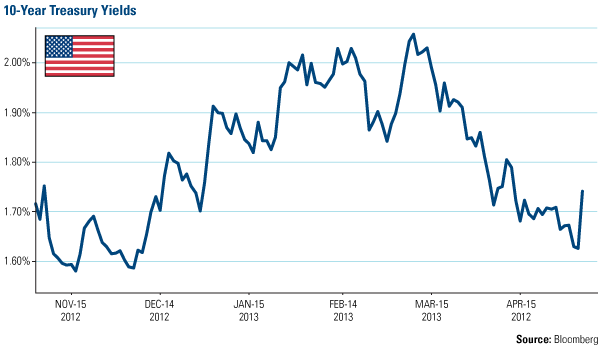The Economy and Bond Market Radar (May 6, 2013)
Treasury yields moved higher this week as Friday’s payroll report was better than expected, leading to a significant sell off in bonds. The Fed reiterated its position while the European Central Bank (ECB) cut interest rates for the first time in 10 months, reassuring the market of its easing bias.
Strengths
- Nonfarm payrolls grew 165,000 in April and February and March were revised higher by 114,000. This unexpected growth in payrolls took the market by surprise as recent data points have been weak.
- The Case-Shiller 20 city index rose 1.2 percent in February, which is the largest monthly gain since 2005. The housing market continues to strengthen, providing a much needed economic tailwind.
- Initial jobless claims fell to 324,000, which is the lowest level since January 2008. This adds credibility to the strong payroll numbers.
Weaknesses
- The ISM manufacturing index fell to 50.7, declining for a second month and approaching the break even level of 50.
- Chinese manufacturing PMI also fell and disappointed the market, but still remains above the critical 50 level.
- Japanese industrial production expanded at a slower than expected pace in March, rising a modest 0.2 percent. South Korean industrial production fell 2.6 percent, well below estimates and shows the pressure that the Japanese yen devaluation is having on the country as the countries compete for exports.
Opportunity
- The Fed continues to remain committed to an extremely accommodative policy.
- Key global central bankers are still in easing mode such as the ECB, Bank of England and the Bank of Japan. The Bank of Japan in particular is aggressively easing currently and the ECB cut rates by 25 basis points this week.
Threat
- Inflation in some corners of the globe is getting the attention of policy makers and may be an early indicator for the rest of the world.
- Trade and/or currency wars cannot be ruled out which may cause unintended consequences and volatility in the financial markets.








